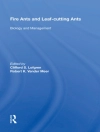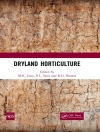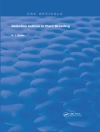Mineral elements are found in foods and drink of all different
types, from drinking water through to mothers’ milk. The
search for mineral elements has shown that many trace and
ultratrace-level elements presented in food are required for a
healthy life. By identifying and analysing these elements, it is
possible to evaluate them for their specific health-giving
properties, and conversely, to isolate their less desirable
properties with a view to reducing or removing them altogether from
some foods. The analysis of mineral elements requires a number of
different techniques – some methods may be suitable for one
food type yet completely unsuited to another.
The Handbook of Mineral Elements in Food is the first
book to bring together the analytical techniques, the regulatory
and legislative framework, and the widest possible range of food
types into one comprehensive handbook for food scientists and
technologists. Much of the book is based on the authors’ own
data, most of which is previously unpublished, making the
Handbook of Mineral Elements in Food a vital and
up-to-the-minute reference for food scientists in industry and
academia alike. Analytical chemists, nutritionists and food policy
makers will also find it an invaluable resource.
Showcasing contributions from international researchers, and
constituting a major resource for our future understanding of the
topic, the Handbook of Mineral Elements in Food is an
essential reference and should be found wherever food science and
technology are researched and taught.
Mục lục
List of Contributors
Preface
Chapter 1 The importance of minerals in the human diet
Chapter 2 Dietary Intake of minerals
Chapter 3 Bioavailability of minerals in foods
Chapter 4 Human risk
Chapter 5 The oligoelements
Chapter 6 The toxic elements
Chapter 7 Geographical variation of land mineral composition
Chapter 8 Variation of food mineral content during industrial
and culinary processing
Chapter 9 Speciation
Chapter 10 Atomic Absorption Spectrometry
Chapter 11 Elemental composition analysis of food by FAES and
ICP-OES
Chapter 12 ICP-MS
Chapter 13 Application of electrochemical techniques
Chapter 14 X-ray
Chapter 15 Vibrational spectroscopy
Chapter 16 Ion chromatography
Chapter 17 Neutron Activation Analysis
Chapter 18 Speciation
Chapter 19 Drinking water
Chapter 20 Elemental composition in grapes and wine role
Chapter 21 Vegetables and fruits
Chapter 22 Cereals and pulses
Chapter 23 Bread and bakery products
Chapter 24 Edible fats and oils
Chapter 25 Elemental Composition of Sugar and Honey
Chapter 26 Meat
Chapter 27 Fish and seafood
Chapter 28 Milk and dairy products
Chapter 29 Mineral content of eggs
Chapter 30 Mineral content of seasonings, salt and vinegar
Chapter 31 Other foods of plant origin
Chapter 32 Baby foods
Chapter 33 Human milk
Index
Giới thiệu về tác giả
Miguel de la Guardia is, since 1991, Professor of Analytical Chemistry at the University of Valencia (Spain), having published numerous papers in the area of Analytical Chemistry related to sample preparation, automation, atomic and molecular spectroscopy and chromatography.
Salvador Garrigues, is Professor of Analytical Chemistry at the University of Valencia (Spain) since 2006, being developed his research about sample preparation and, mainly, in the field of vibrational spectroscopy applied to the quantitative analysis, combined with automation and the use of chemometrics.
Their research group has contributed to the development of Green Analytical Chemistry and participated in different research projects focused on food characterization and food safety, also for authentication of Protected Designation of Origin (PDO) foods.












